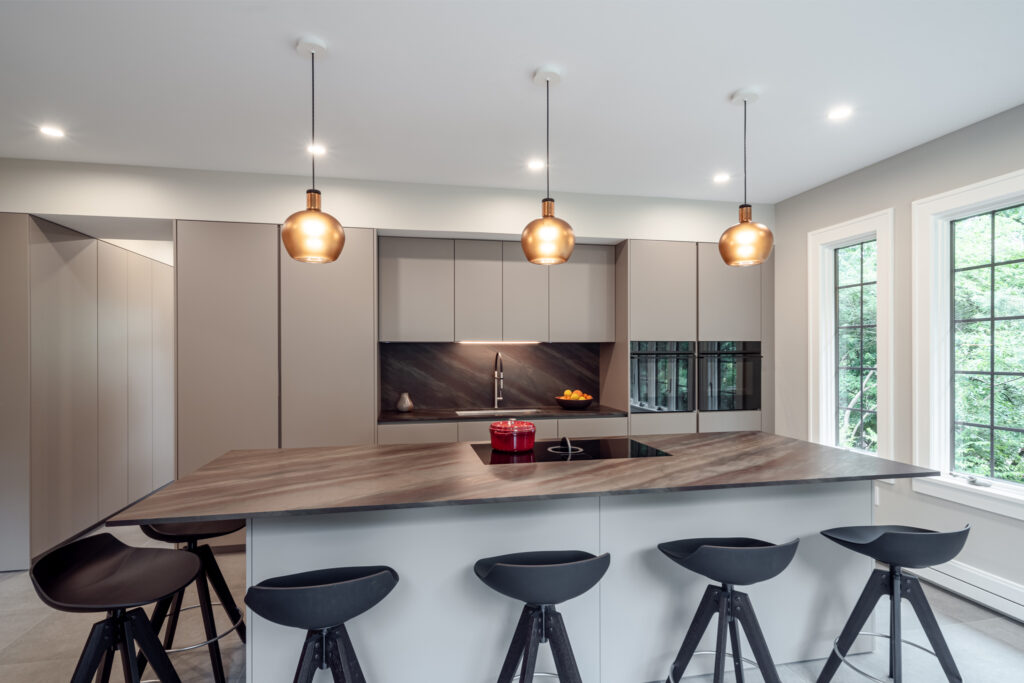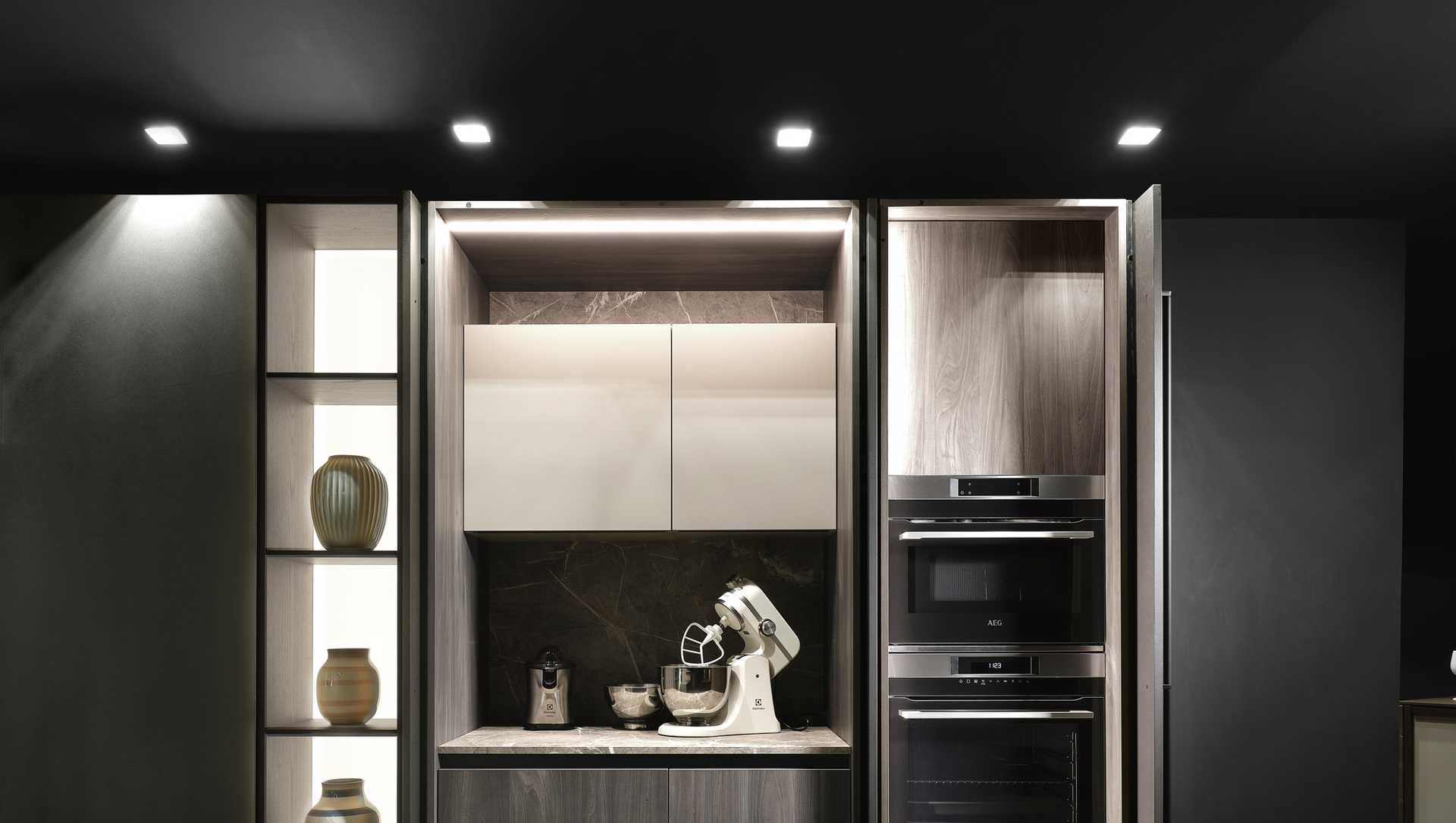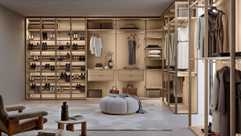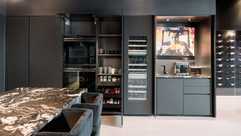What’s the point of a gorgeous, modern kitchen if you can’t see it properly? While many people light up at the thought of remodeling their kitchen’s floors, walls, and cabinetry, we’re here to tell you that kitchen lighting is actually one of the most important parts of the design process. Just think about it – we all know what it’s like to step into a bit of bad lighting. A poorly lit room space can bring down the energy of a room, no matter how well designed it is otherwise.
So how do you ensure your kitchen remodel includes a thoughtfully designed lighting plan? Kitchen lighting needs to be designed with a goal in mind and be included in your design process from the beginning. For a modern look you’re going to want to focus on letting in natural light while also supplementing with additional lighting added in layers according to need.

The Different Types of Modern Lighting
Typically your modern kitchen lighting will come in three forms: General, Mood, and Task. General lighting exists to provide enough luminosity for the room, and is usually the first layer of kitchen lighting fixtures you’re going to add to the space. Once the general lighting is added in, it’s time to layer in the next two types: Mood and Task lighting.
Mood lighting is all about design and accent. This can include pendant lights and other integrated lighting solutions added specifically to give your room a “wow” factor.

This is the lighting that helps to create a warm, welcoming environment for guests, which is especially important in a kitchen designed for entertaining and serving as the heart of the home.
Task lighting is all about function. These are light integrated into the design of a room specifically to help with work that needs to be done in the space. In your kitchen, this could mean directional lights on top of your kitchen island, cabinet lighting, or lights around the area where you’ll be preparing food.
In particular, we here at NOLI love interior cabinet lighting, which is a combo of task and mood lighting that adds ambiance to the room while also providing more functionality for the cabinet itself.

Lighting Integration: Hide Those Lights
Now that you know about the three types of lighting, it’s time to talk about how you’re going to integrate them into your design. Italian modern design is all about one thing when it comes to lighting: hiding the hardware. You want to see the light, but you don’t want to see the fixture.
This can be accomplished in a number of different ways. One of our favorites is recessed lighting behind a cabinet to give a glowing, floating effect. Much like with other kitchen appliances, in modern design you want the lights to be integrated so they disappear. That’s why it’s so important to plan out your lighting from the beginning. If you wait to consider lighting until after the fact, chances are your fixtures will be visible. Here is a good example of hidden lighting from a recent kitchen makeover in Mt. Adams.

Ready to start lighting the modern Italian kitchen of your dreams? At NOLI, we approach lighting as part of our overall product and plan lights early in the design process to avoid the need for visible fixtures. Where others may only specialize in general or task lighting, at NOLI we take all three types of lighting into account as we’re designing your space so that everything in your new kitchen is exactly right.
Contact us to get started lighting your modern Italian kitchen or swing by our Cincinnati showroom in Findlay Market to see our work for yourself.


